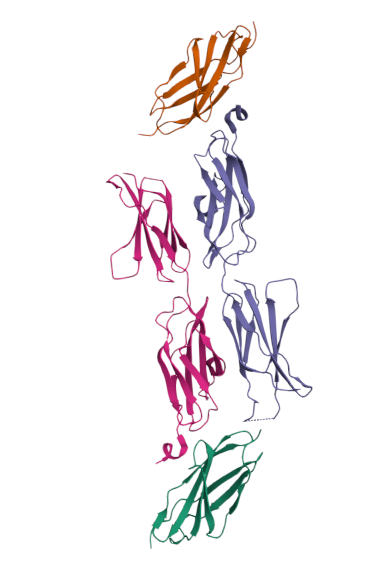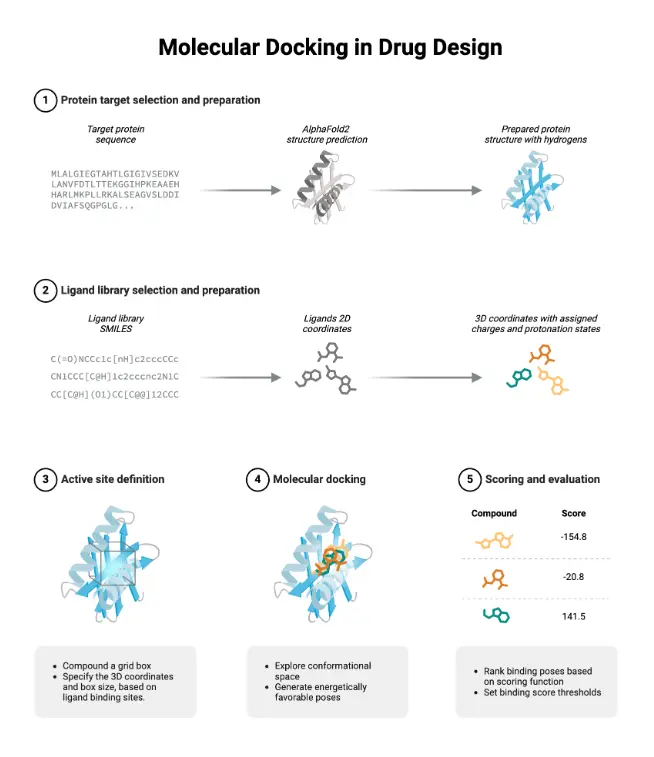Decrypting Molecular Keys
A Complete Workflow for the Study of Ligand-Receptor Interactions with PDB, BLAST, PyMOL, Discovery Studio, Modeling, and Docking.
Welcome to Chronos-OA, your portal dedicated to exploring the fascinating world of bioinformatics. Here, biology meets data science to unveil the deepest secrets of life and shape the future of research. Whether you are a curious student, an experienced researcher, or a professional looking to master the latest techniques, Chronos-OA is your essential resource for understanding and analyzing vast amounts of genetic and biological information, with a strong focus on open access and knowledge sharing.

What is Bioinformatics?
Bioinformatics is an interdisciplinary field that develops and uses computational and statistical methods to understand biological data. It allows us to:
Analyze DNA and protein sequences: Identify genes, predict protein functions, and trace the evolution of species.
Model 3D structures: Understand how molecules interact and design new drugs.
Interpret large-scale data:
Transform millions of data points from sequencing or gene expression into meaningful biological discoveries.
Advance medicine:
From personalized medicine to the discovery of new therapies for complex diseases.
🔬 What You'll Learn and Explore
Our platform guides you through a comprehensive, step-by-step workflow using cutting-edge bioinformatics tools and molecular modeling software:
- PDB (Protein Data Bank):
- Discover and retrieve high-resolution 3D structures of proteins and complexes.
- BLAST (Basic Local Alignment Search Tool):
- Identify homologous sequences, annotate unknown proteins, and perform evolutionary analysis.
- PyMOL:
- Visualize molecular structures with precision, manipulate models, and prepare them for simulation or docking.
- Discovery Studio:
- A powerful suite for molecular modeling, including ligand preparation, protein editing, and advanced docking algorithms like CDOCKER.
- Molecular Docking: Simulate and predict the best-fit orientation of ligands within target receptors, using popular tools such as AutoDock Vina, SwissDock, and UCSF DOCK.
Whether you are modeling a protein-ligand complex, screening a compound library, or learning how to visualize and interpret structural data, Chronos-OA is designed to support your journey with clarity, depth, and practical insights.
🌐 Open Access, Open Knowledge.
We are committed to open science and knowledge sharing. All our resources, guides, and workflows emphasize transparency and reproducibility — values that are essential to the progress of scientific discovery.
👨🔬 For Whom?
- Students seeking to strengthen their understanding of structural biology and computational tools.
- Researchers aiming to streamline their drug discovery pipelines or deepen structural insights.
- Professionals in biotech and pharma looking to stay current with the latest modeling and simulation technologies.
🚀 Start your scientific exploration today
At Chronos-OA, we believe that every researcher, student, or professional deserves simple, guided, and transparent access to the cutting-edge tools that transform biomolecular research.
➡️ No need to be an expert to get started.
Our guides are designed for all levels: each step is explained clearly, accompanied by screenshots, template files, and direct links to the software used.
➡️ A practice-based learning approach.
We prioritize a "learning by doing" approach, with case studies inspired by real research, interactive tutorials, and demonstrations of complete workflows.
➡️ An open and collaborative community.
Join a community of enthusiasts where knowledge flows freely. Exchange with other users, share your results, or ask your questions in our collaborative spaces.
Next steps?
Explore our comprehensive guide "Decrypting Molecular Keys"
Learn to use bioinformatics tools step by step, from PDB to AutoDock Vina.
Our latest content
Check out what's new in our company !
Our latest content
Check out what's new in our company !


